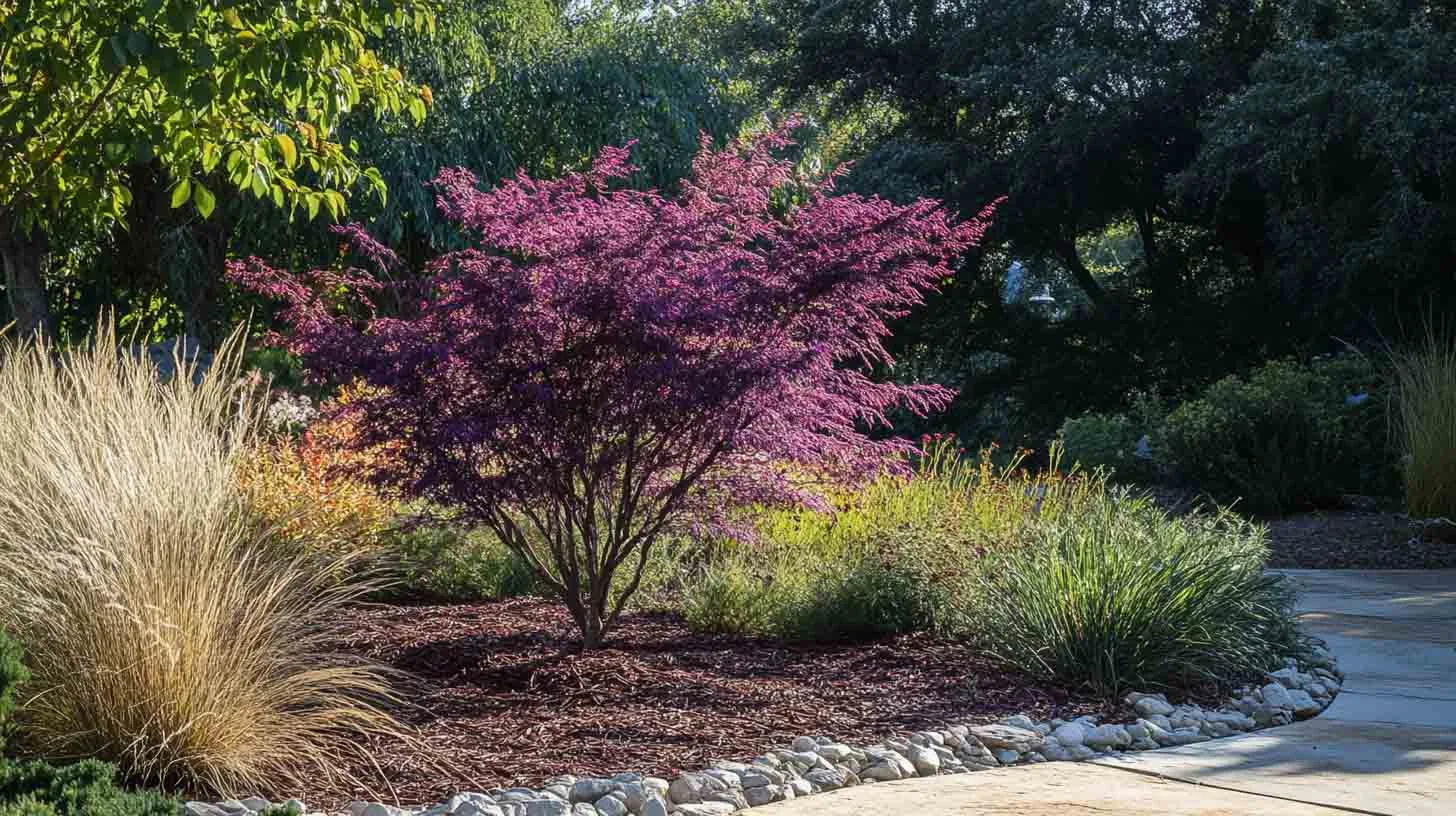Let’s be honest, big trees can be a pain. Not everyone has the space (or patience) for a massive oak or maple.
But a small flowering tree? Now that’s a game-changer. You get beauty, manageable size, and seasonal interest, all in one neat package.
I’ve been a sucker for these compact showstoppers ever since I planted a dwarf magnolia next to my patio. It bloomed like a champ and didn’t eat up my entire yard.
If you’re thinking of adding charm without the overwhelm, you’re in the right place.
1. Eastern Redbud (Cercis canadensis)
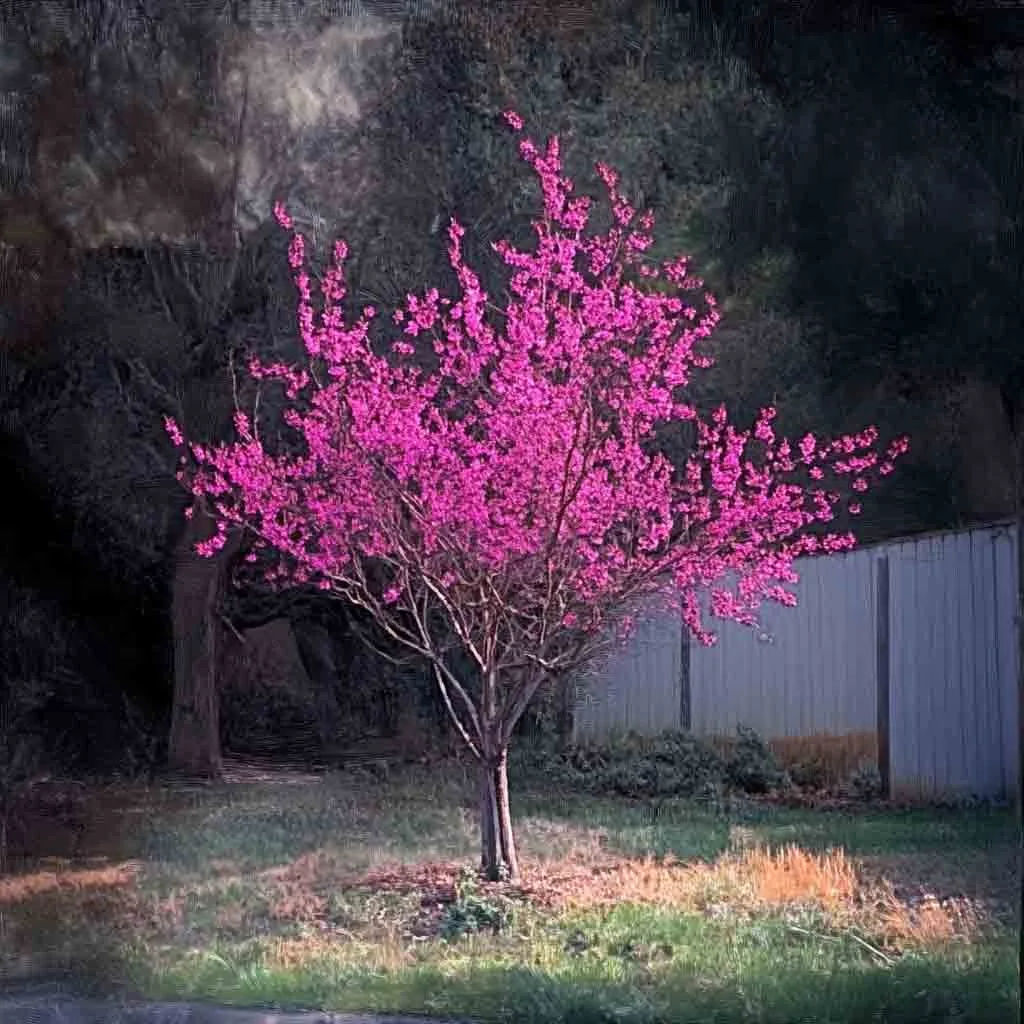
This one’s a personal favorite. I planted it by my mailbox, and people literally stop to ask about it.
- Height: 15–25 feet
- Bloom Time: Early spring
- Color: Vivid pinkish-purple blossoms
Why You’ll Love It:
- Heart-shaped leaves turn golden-yellow in fall.
- Blooms even before leaves appear, making it pop.
- Great for pollinators like bees and butterflies.
🌸 Design Tip: Looks stunning as a specimen tree or in a grouping with evergreens.
2. Flowering Dogwood (Cornus florida)
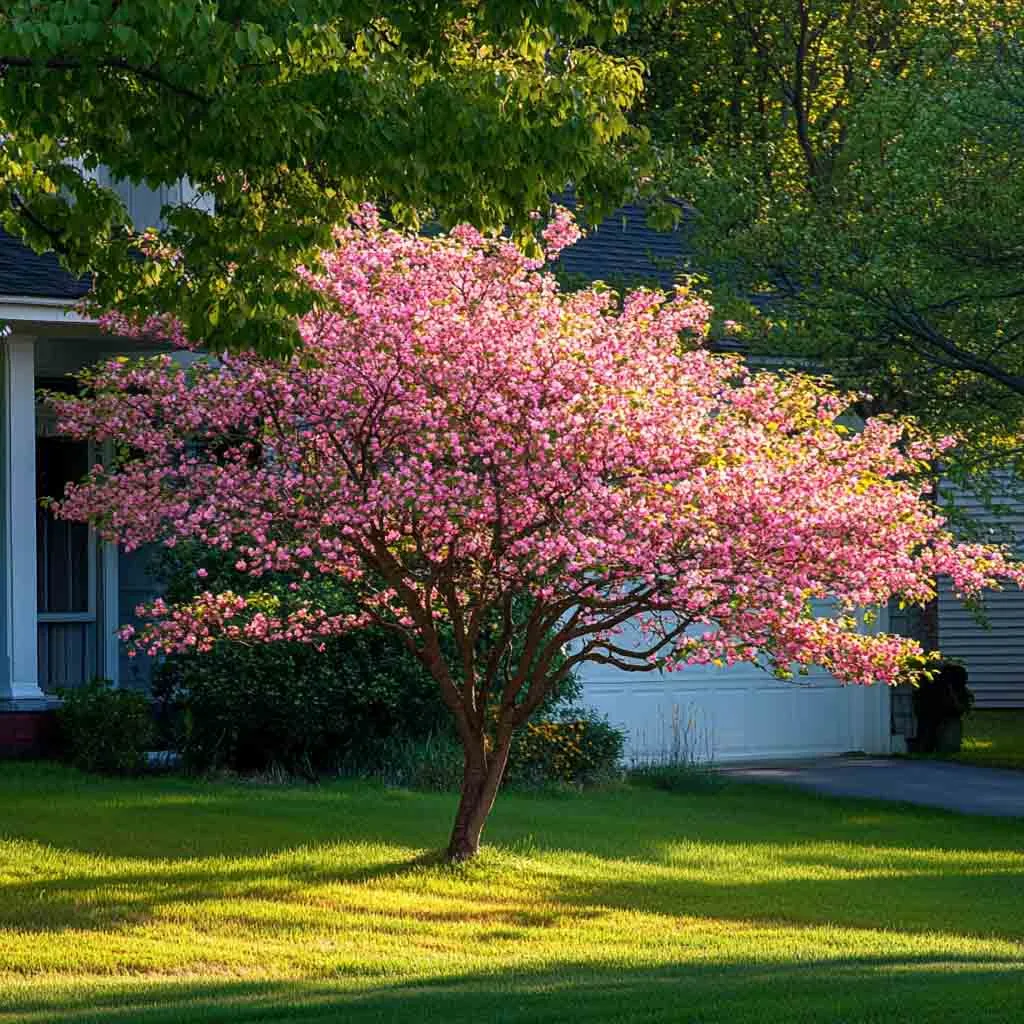
There’s just something classic and elegant about a dogwood.
- Height: 15–30 feet
- Bloom Time: Mid to late spring
- Color: White, pink, or red
What Makes It Special:
- Bracts (not petals) give it that iconic layered bloom.
- Fall brings bright red berries and crimson foliage.
- Native and wildlife-friendly.
🌸 Design Tip: Ideal for partial shade spots near porches or under taller trees.
3. Japanese Maple (Acer palmatum)
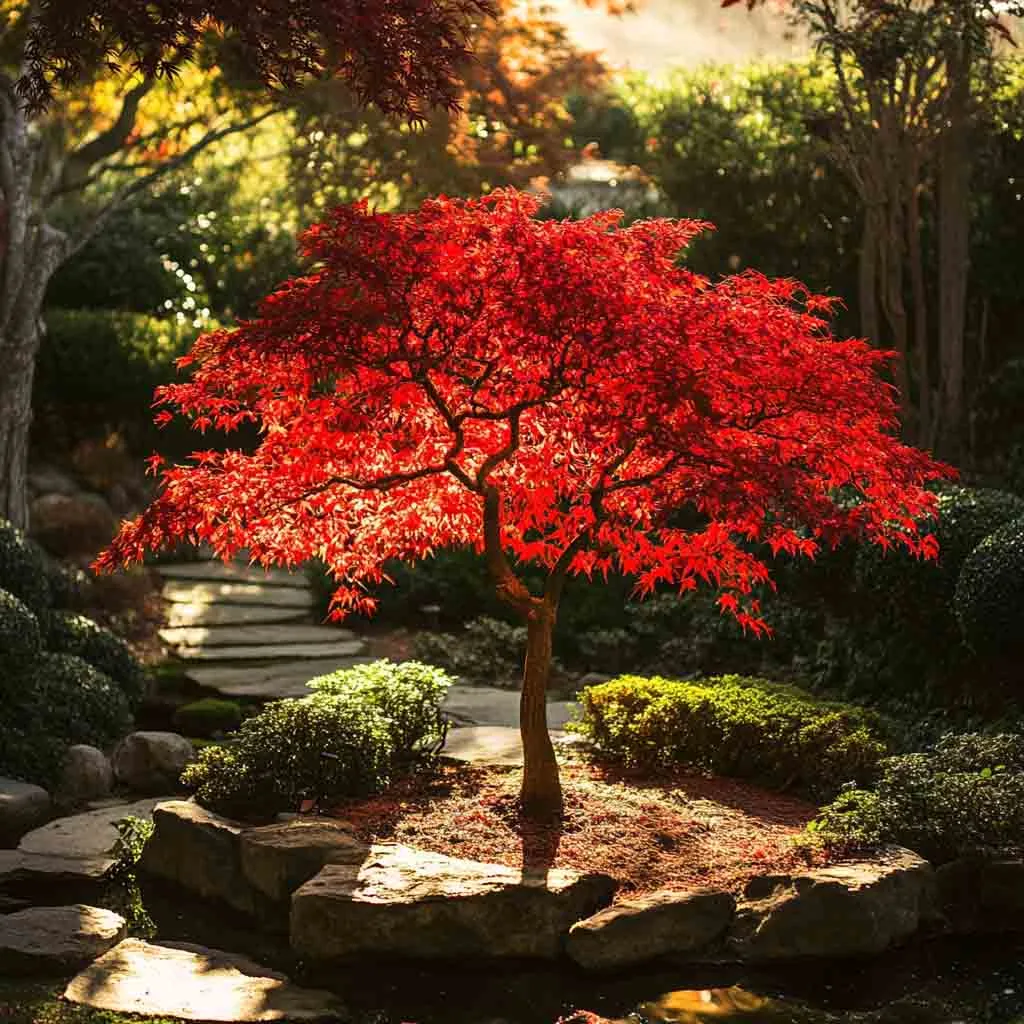
Not your typical flower bloomer, but it deserves a spot for its gorgeous foliage that looks like flowers in motion.
- Height: 10–25 feet
- Bloom Time: Spring (tiny red flowers)
- Color: Red, purple, or green foliage
Why It Works:
- Delicate, lacy leaves add year-round drama.
- Perfect for Zen gardens, patios, or front yards.
- Low maintenance and easy to prune.
🍁 Design Tip: Try a weeping variety near a water feature, pure magic.
4. Crape Myrtle (Lagerstroemia indica)
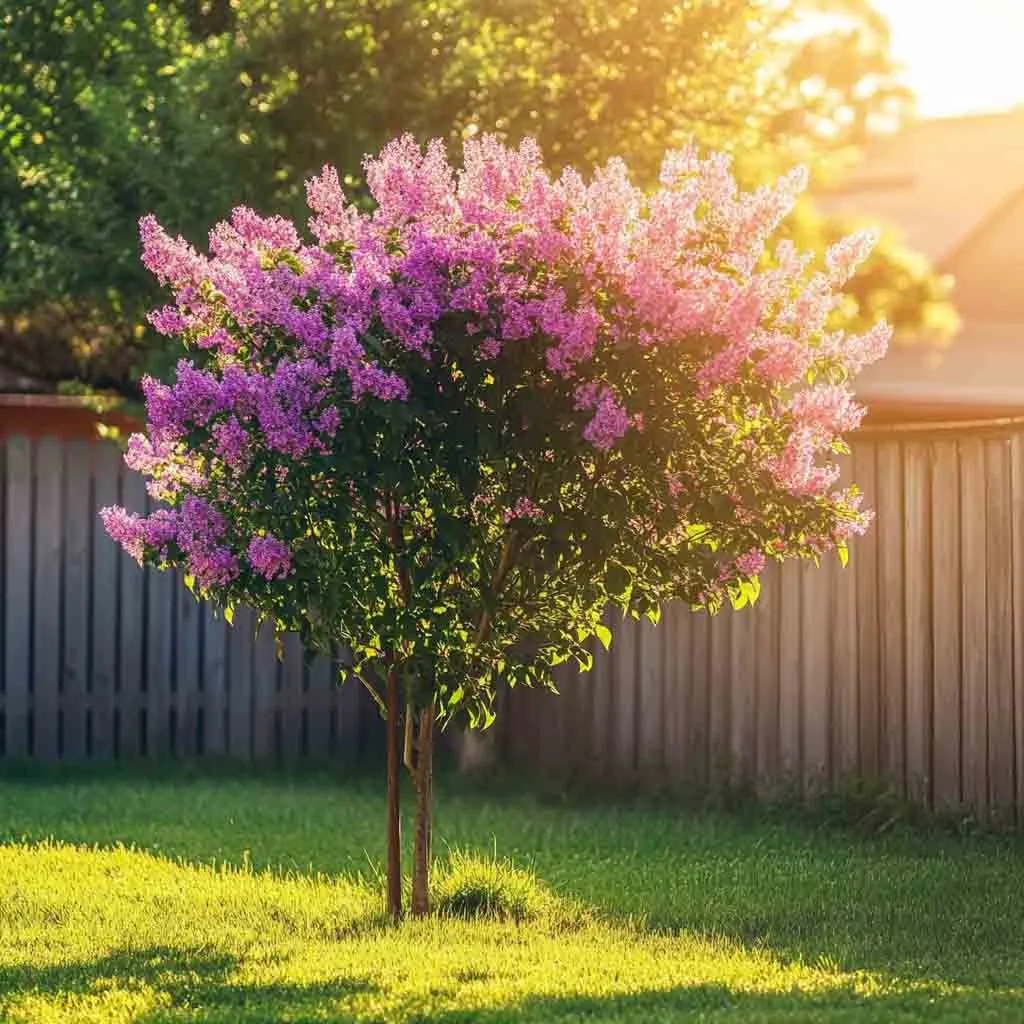
This one’s a southern staple. I grew up with crape myrtles lining our street.
- Height: 10–20 feet
- Bloom Time: Summer to early fall
- Color: White, pink, lavender, red
What Stands Out:
- Long blooming season (up to 100 days!).
- Peeling bark adds winter interest.
- Drought-tolerant and thrives in full sun.
🌸 Design Tip: Use as a focal point near entryways or along fences.
5. Magnolia ‘Jane’ (Magnolia x ‘Jane’)
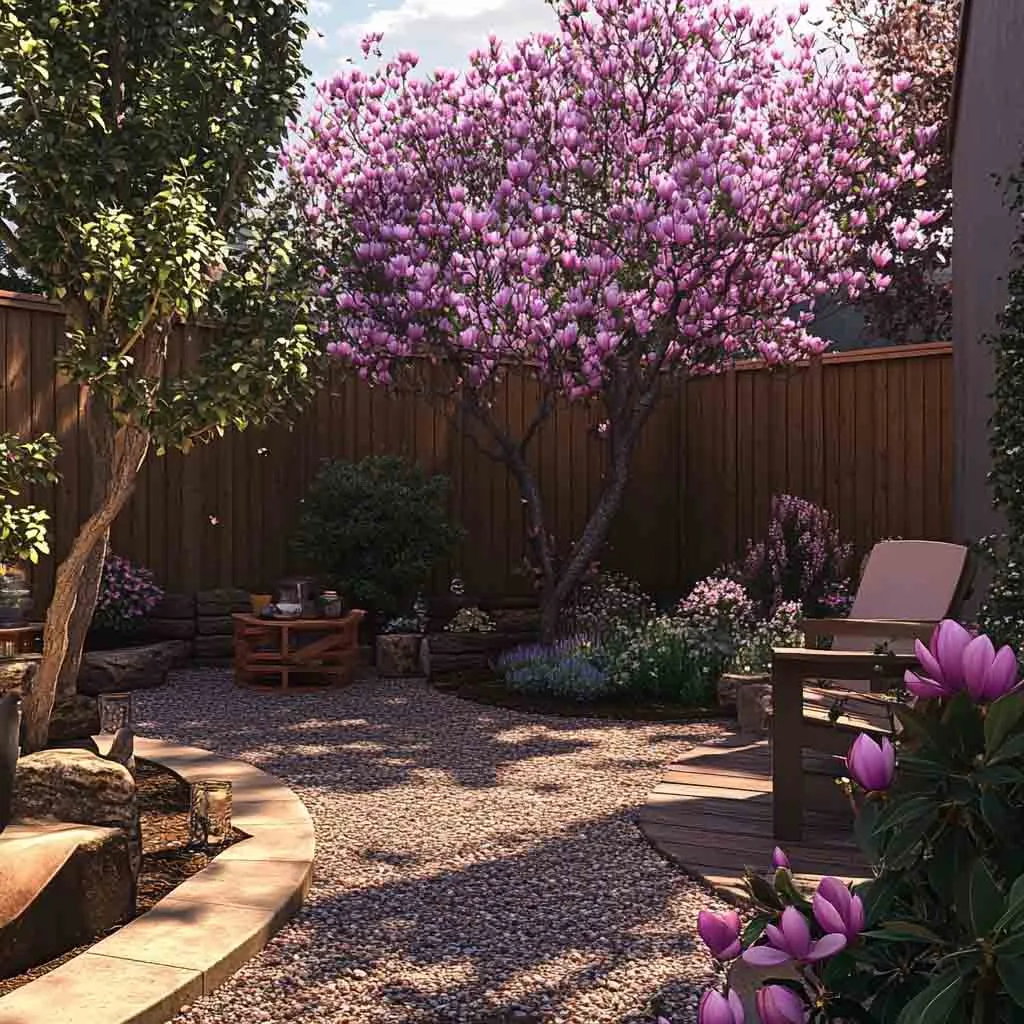
If you’re craving those iconic magnolia blooms but don’t want a 60-foot monster, this variety is for you.
- Height: 10–15 feet
- Bloom Time: Late spring
- Color: Purple-pink outside, white inside
Highlights:
- Compact and perfect for smaller yards.
- Flowers are tulip-shaped and lightly scented.
- Grows well in zones 4–8, making it pretty versatile.
🌸 Design Tip: Pair it with dark mulch to make those blooms pop.
6. Serviceberry (Amelanchier spp.)
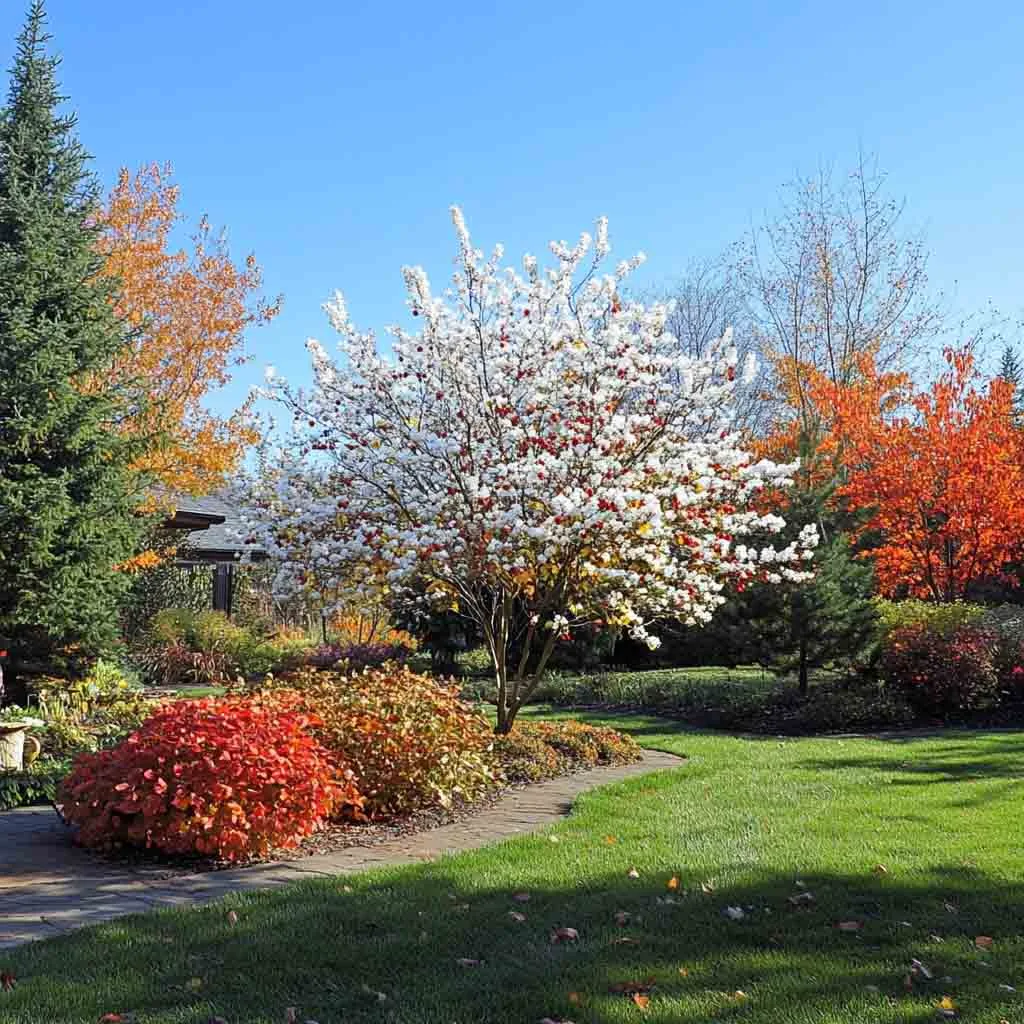
This tree is the Swiss Army knife of the garden. It has flowers, fruit, and fall color, all in one.
- Height: 15–25 feet
- Bloom Time: Early spring
- Color: White blossoms, red to purple berries
What’s to Love:
- Edible berries that taste like blueberries.
- Attracts birds, bees, and butterflies.
- Stunning orange-red fall foliage.
🌳 Design Tip: Great for naturalized or woodland garden styles.
7. Fringetree (Chionanthus virginicus)
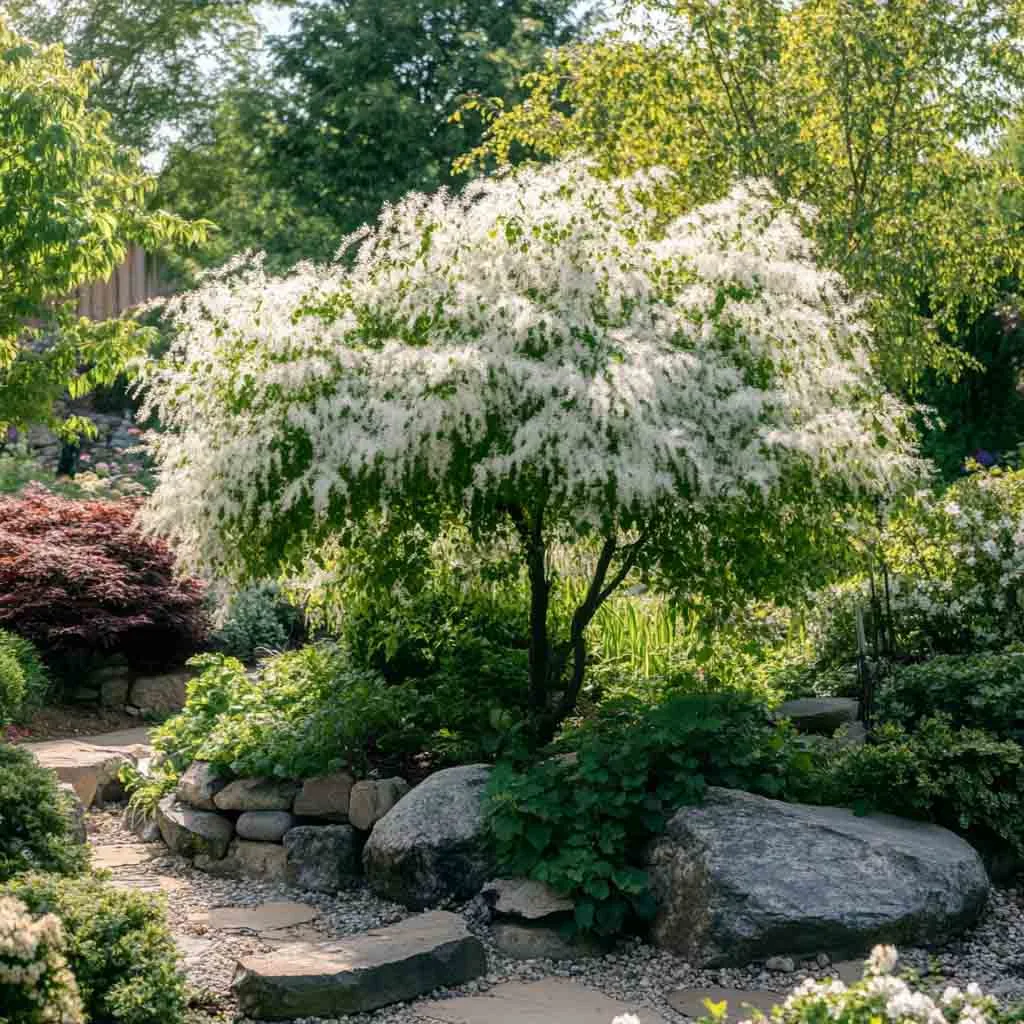
This one is a bit of an under-the-radar gem, but wow, what a looker.
- Height: 12–20 feet
- Bloom Time: Late spring to early summer
- Color: Fragrant white fringe-like flowers
Why It’s Unique:
- Flowers look like snowy fireworks.
- Very low maintenance and pest resistant.
- Works in both sun and part shade.
🌸 Design Tip: Beautiful as a standalone tree near patios or decks.
8. Lilac Tree (Syringa reticulata)
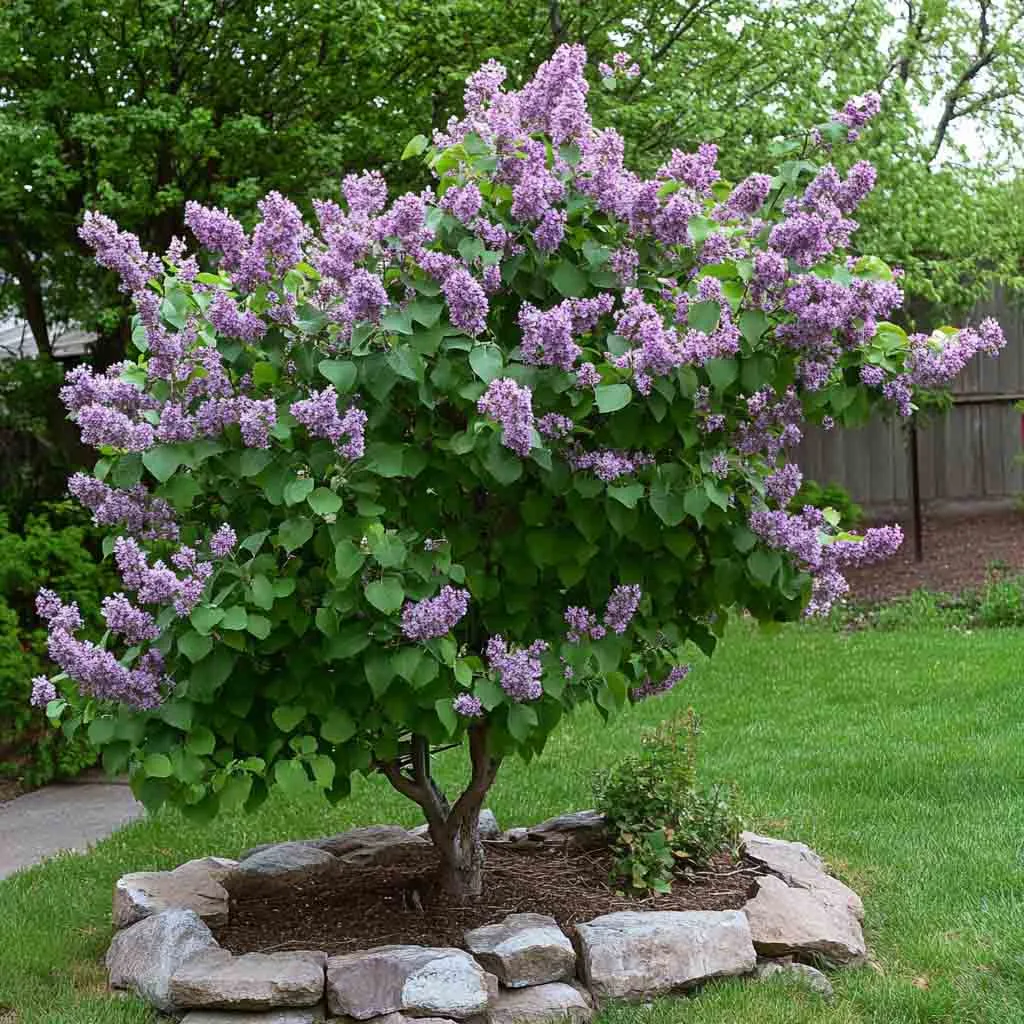
Not a shrub this time, this is the tree form of lilac, and it smells heavenly.
- Height: 15–20 feet
- Bloom Time: Early summer
- Color: Creamy white
Why It’s Worth It:
- Huge clusters of sweet-scented blooms.
- Blooms later than most spring trees, extending the season.
- Tough, cold-hardy, and urban friendly.
🌸 Design Tip: Place it near windows or walkways to enjoy the scent up close.
9. Dwarf Korean Lilac (Syringa meyeri ‘Palibin’)
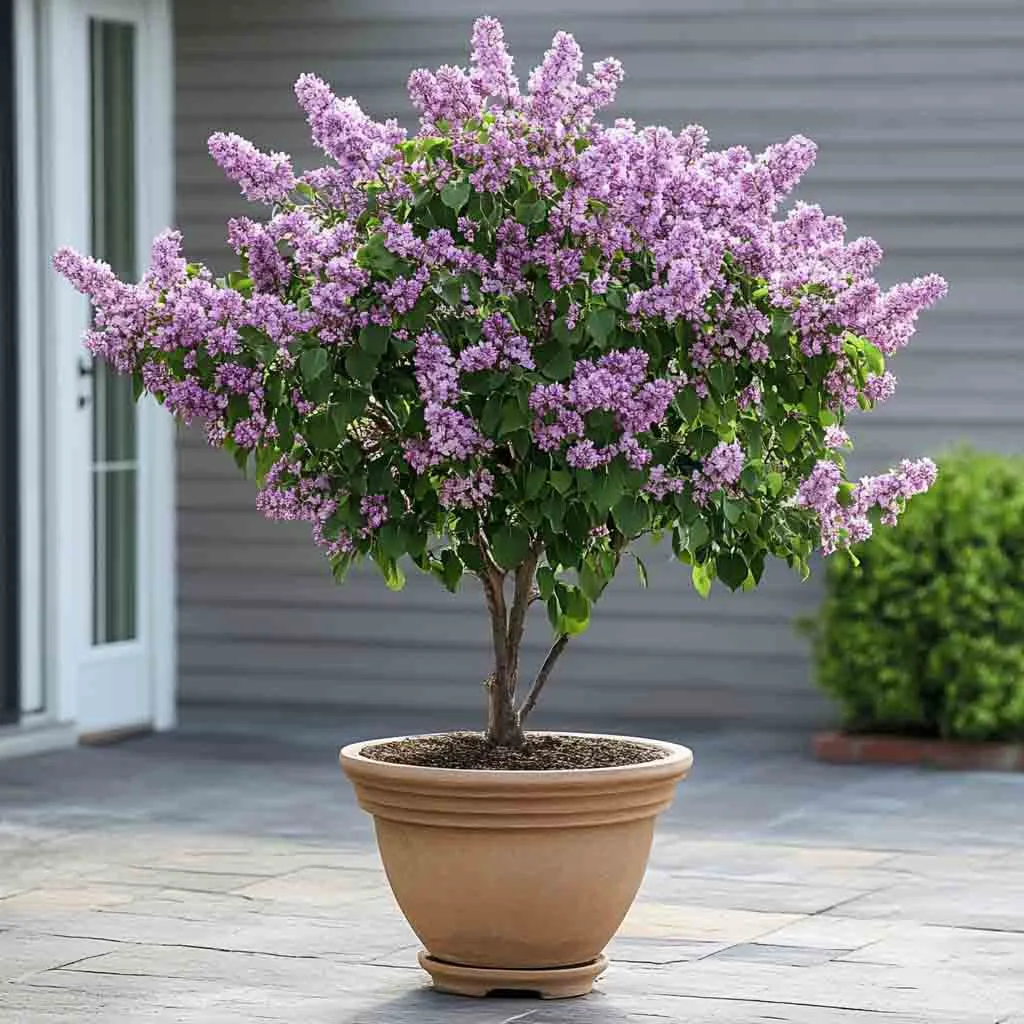
Okay, this one’s more of a large shrub, but if you train it as a standard, it makes the cutest little flowering tree.
- Height: 6–8 feet
- Bloom Time: Late spring
- Color: Lavender-pink
What Makes It Pop:
- Compact, dense, and super fragrant.
- Attracts hummingbirds and butterflies.
- Blooms heavily with minimal care.
🌿 Design Tip: Use in containers or beside patios for a sweet spring statement.
10. Hawthorn ‘Winter King’ (Crataegus viridis)
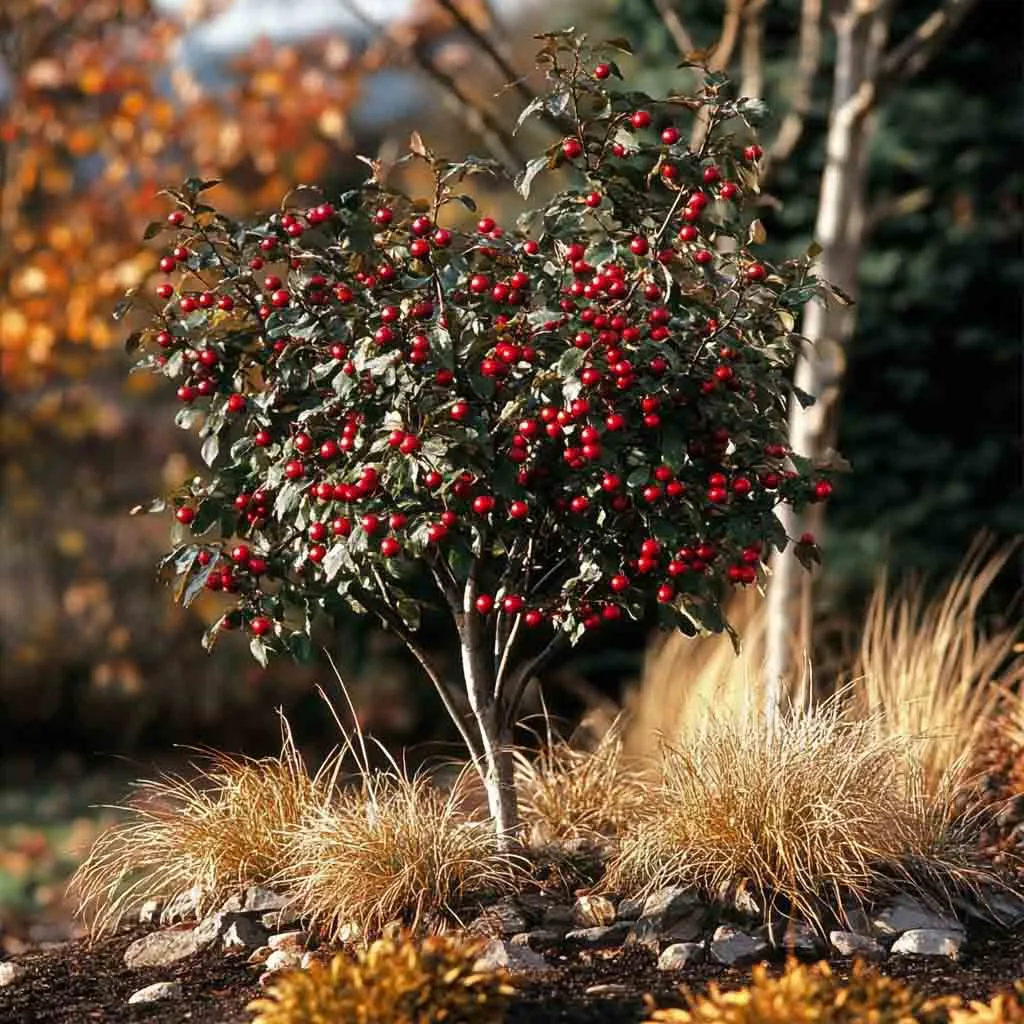
Don’t let the name fool you, this one is a year-round performer.
- Height: 20–30 feet
- Bloom Time: Late spring
- Color: White flowers, red berries
Best Features:
- Fall brings bright red fruit that lasts into winter.
- Birds absolutely love the berries.
- Silvery bark adds off-season charm.
🌸 Design Tip: Use as a backdrop to low-growing perennials for a layered look.
11. Smoketree (Cotinus coggygria)
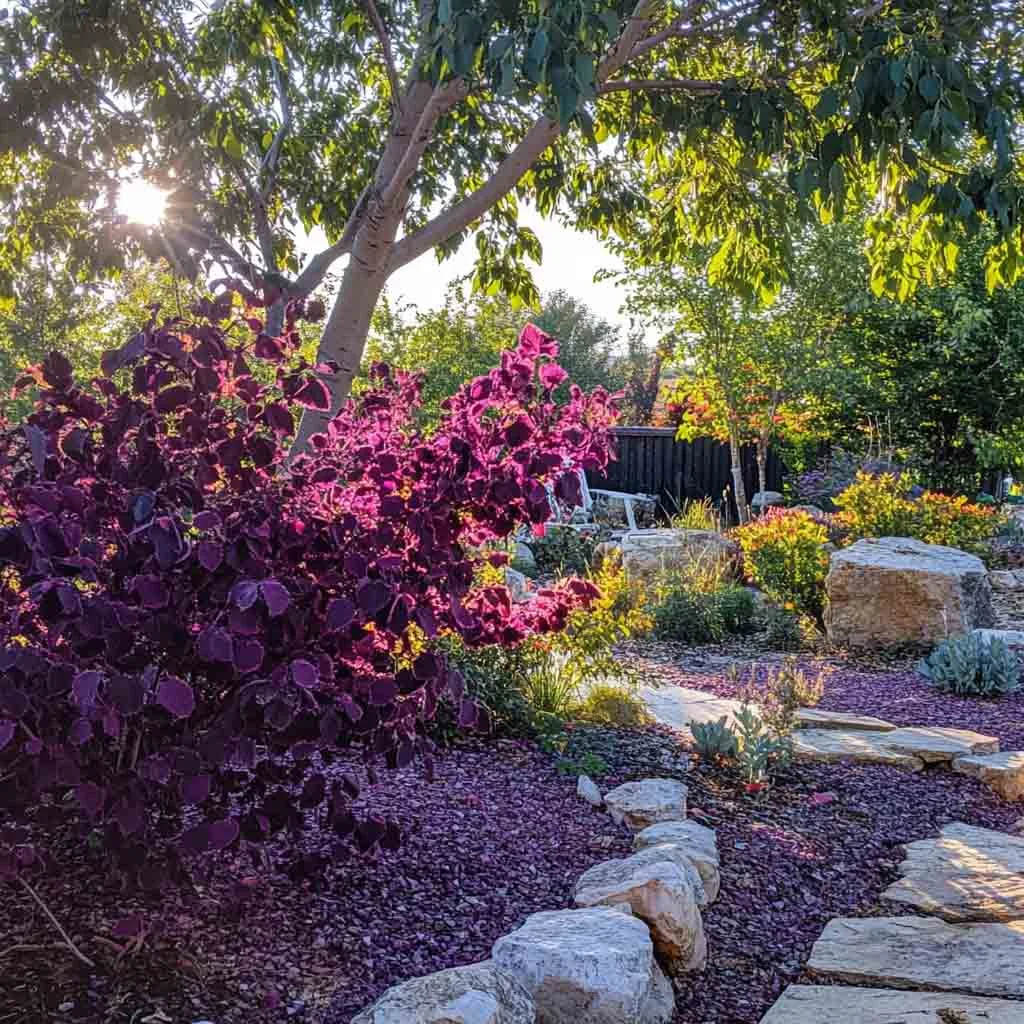
Okay, I know the name’s a little dramatic, but this tree brings real wow factor without needing tons of space.
- Height: 10–15 feet
- Bloom Time: Late spring to early summer
- Color: Fluffy pink-purple “smoky” plumes
Why It’s So Cool:
- Its feathery blooms look like smoke clouds floating over the branches.
- The purple foliage (especially on ‘Royal Purple’ variety) adds contrast.
- Super hardy and tolerates drought, heat, and poor soil.
🌸 Design Tip: Pair it with gravel or stone mulch for a bold, modern look.
12. Crabapple (Malus spp.)
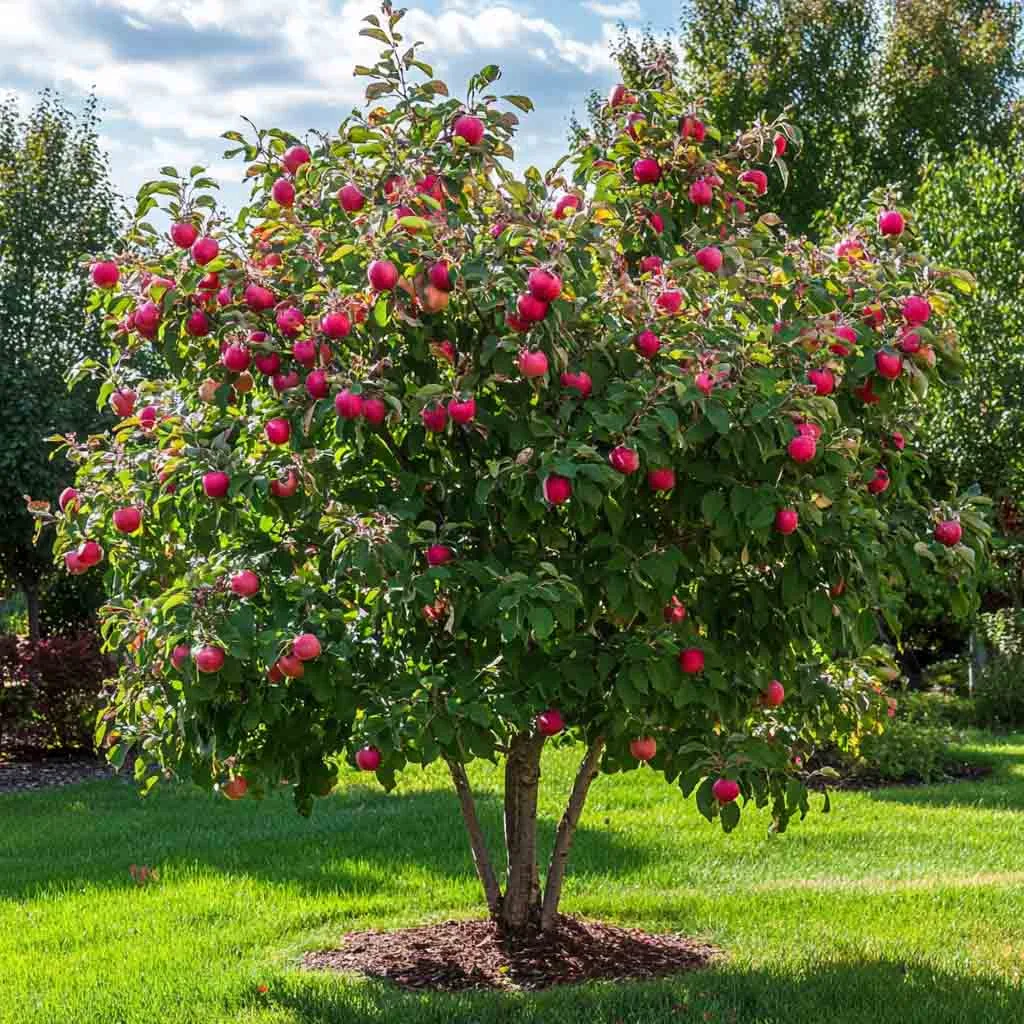
This one has a special place in my heart. My grandma had a white crabapple that exploded in bloom every spring.
- Height: 10–20 feet
- Bloom Time: Mid to late spring
- Color: White, pink, or red
What Makes It Shine:
- Some varieties offer edible fruit perfect for jelly.
- Fragrant blossoms create a springtime snow globe effect.
- Great for wildlife, especially birds.
🍏 Design Tip: Choose a disease-resistant variety like ‘Prairifire’ or ‘Royal Raindrops’.
13. Golden Chain Tree (Laburnum × watereri)
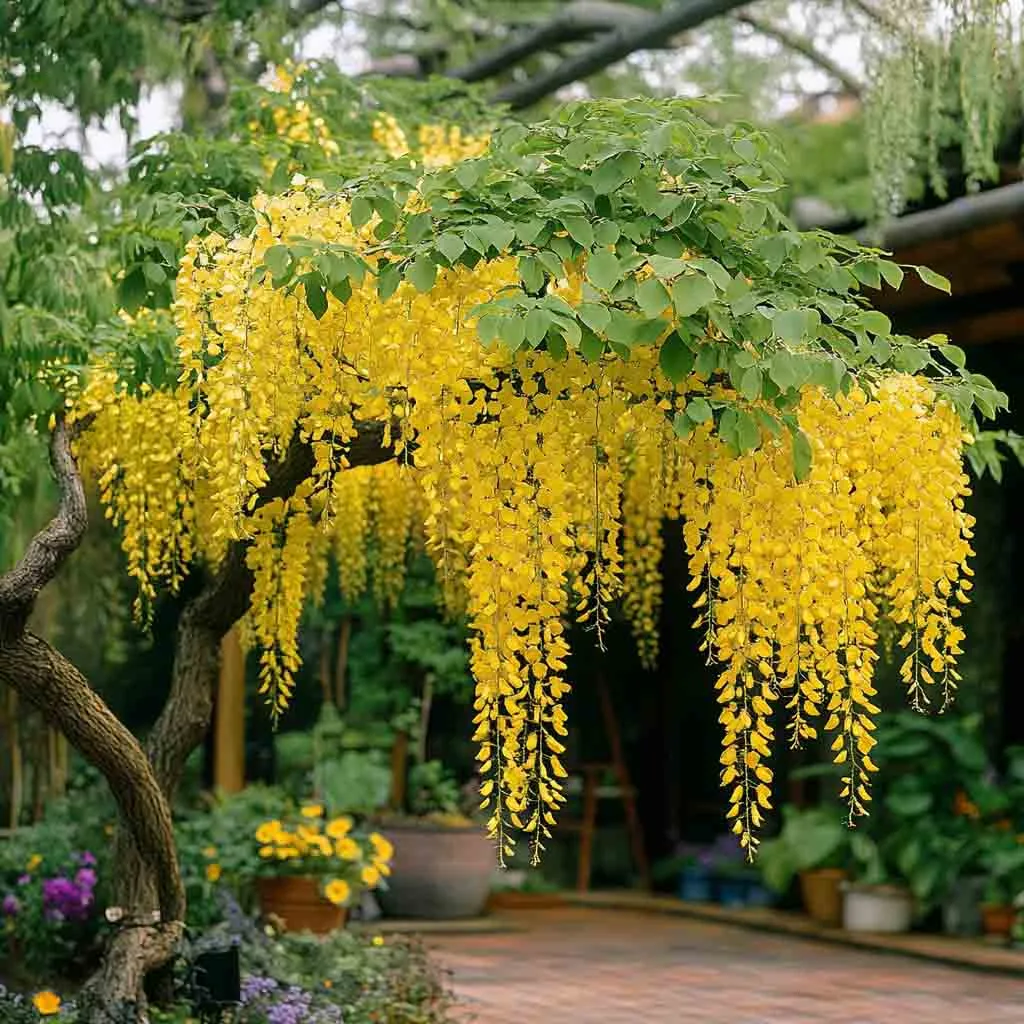
If you want something truly show-stopping, this one feels like it’s straight out of a fairy tale.
- Height: 10–15 feet
- Bloom Time: Late spring
- Color: Bright golden-yellow
What’s So Magical:
- Long, hanging flower clusters that look like golden waterfalls.
- Best in cooler climates with well-drained soil.
- Doesn’t need a lot of fussing or feeding.
🌼 Design Tip: Perfect for framing a garden bench or archway for max romance.
14. Red Buckeye (Aesculus pavia)
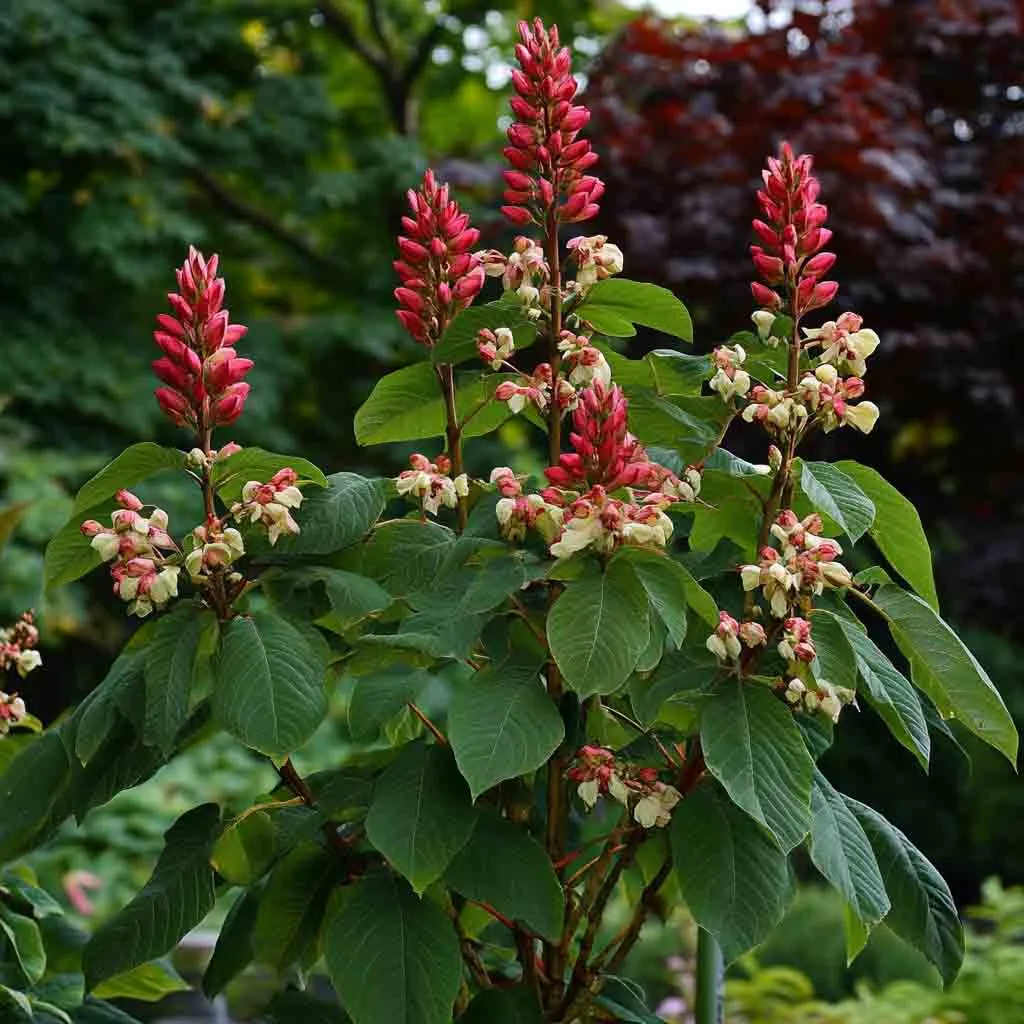
If you love hummingbirds, this is your tree. It’s like a flashing neon sign for them in spring.
- Height: 10–20 feet
- Bloom Time: Spring
- Color: Bright red or red-orange
Why Gardeners Love It:
- Tubular blooms are hummingbird magnets.
- Grows well in partial shade and moist soils.
- Native to the southeastern U.S., so it’s great for naturalized gardens.
🌳 Design Tip: Looks great along woodland edges or mixed borders.
15. Purple Leaf Plum (Prunus cerasifera)
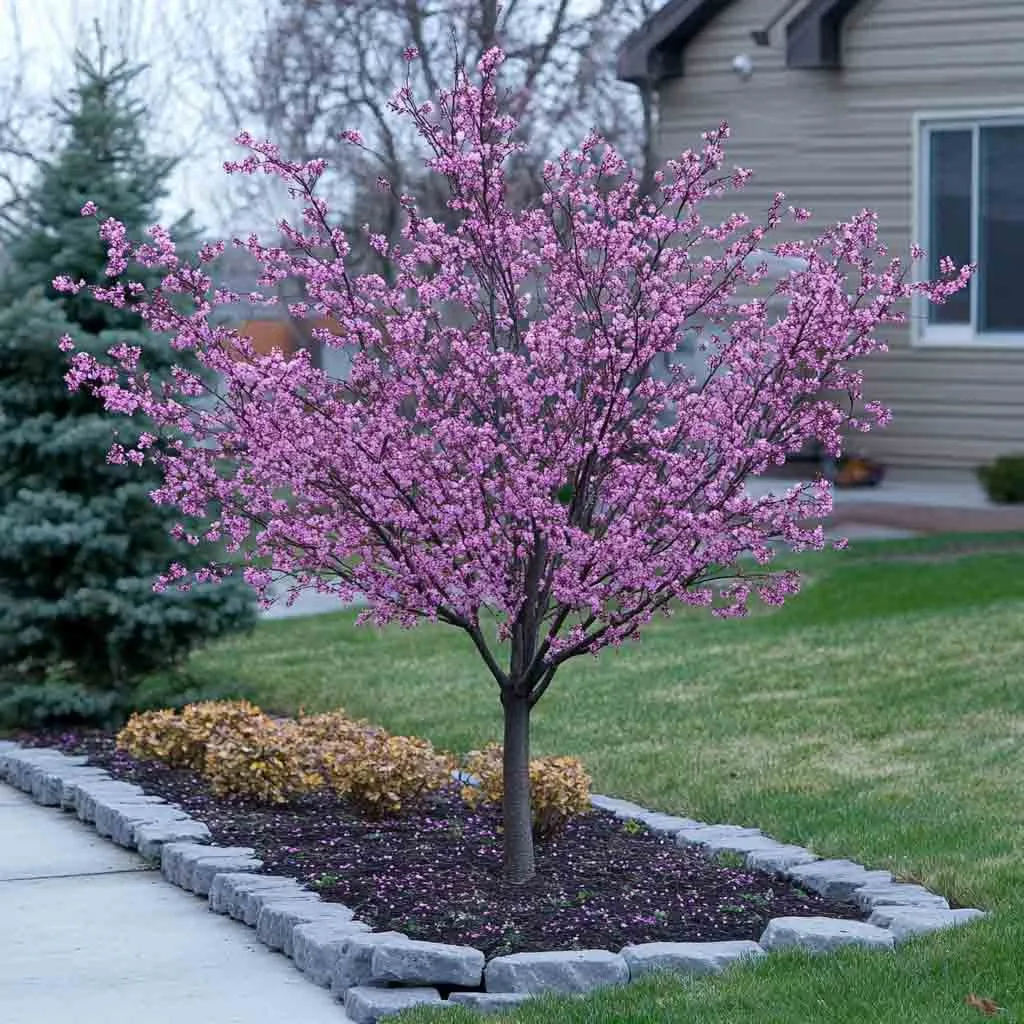
This tree is basically a living bouquet with its soft pink blossoms and deep purple leaves.
- Height: 15–20 feet
- Bloom Time: Early spring
- Color: Pale pink flowers, purple foliage
Standout Qualities:
- Beautiful from early spring through fall.
- Some varieties produce small, edible fruit.
- Compact, rounded shape works in tight yards.
🌸 Design Tip: Combine with gray or white foliage plants for contrast.
16. Chaste Tree (Vitex agnus-castus)
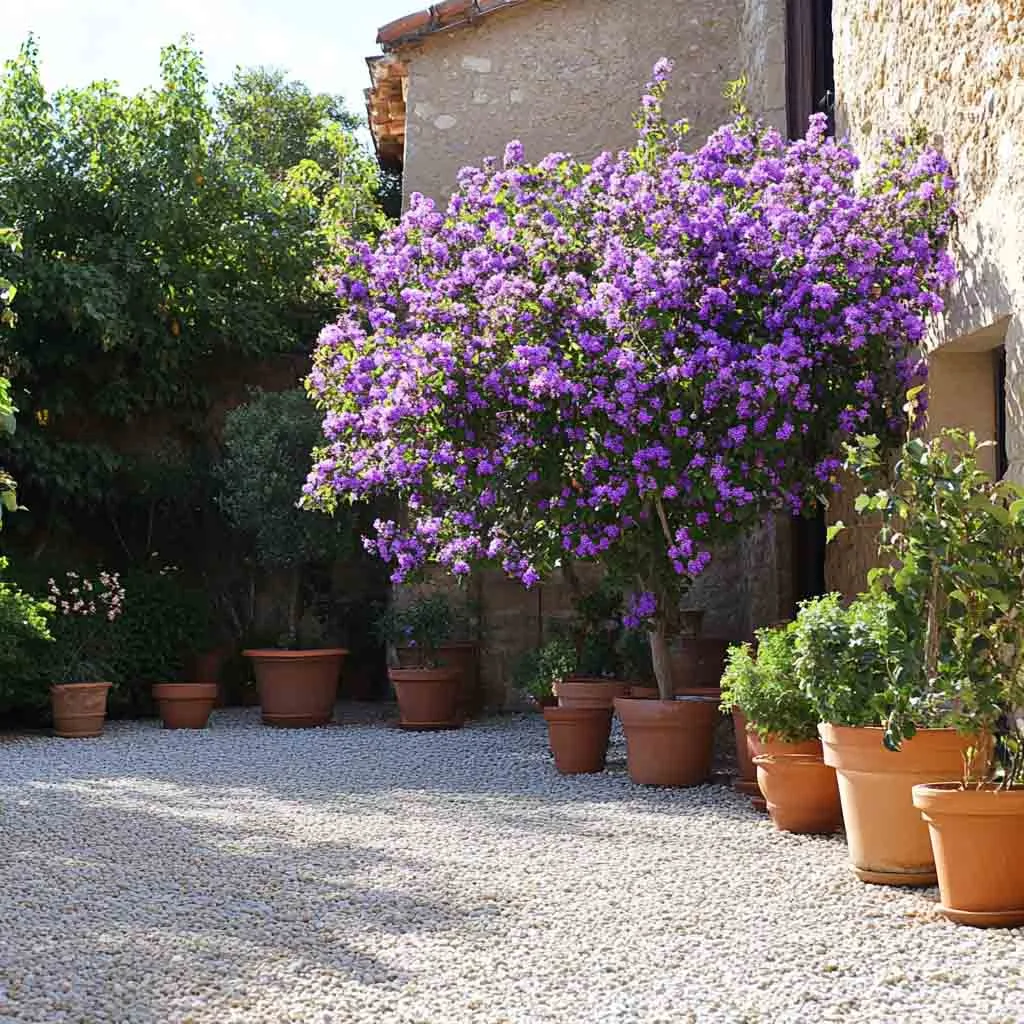
I call this one the lavender tree, even though it’s technically not. But those fragrant purple spikes? Chef’s kiss.
- Height: 10–20 feet
- Bloom Time: Summer
- Color: Purple, lavender, or pink
What You’ll Love:
- Fragrant blooms attract bees and butterflies.
- Drought-tolerant once established.
- Grows fast and looks great in coastal or Mediterranean-style gardens.
🌿 Design Tip: Let it grow as a multi-trunk tree for extra flair and shape.
17. Bottlebrush Tree (Callistemon spp.)
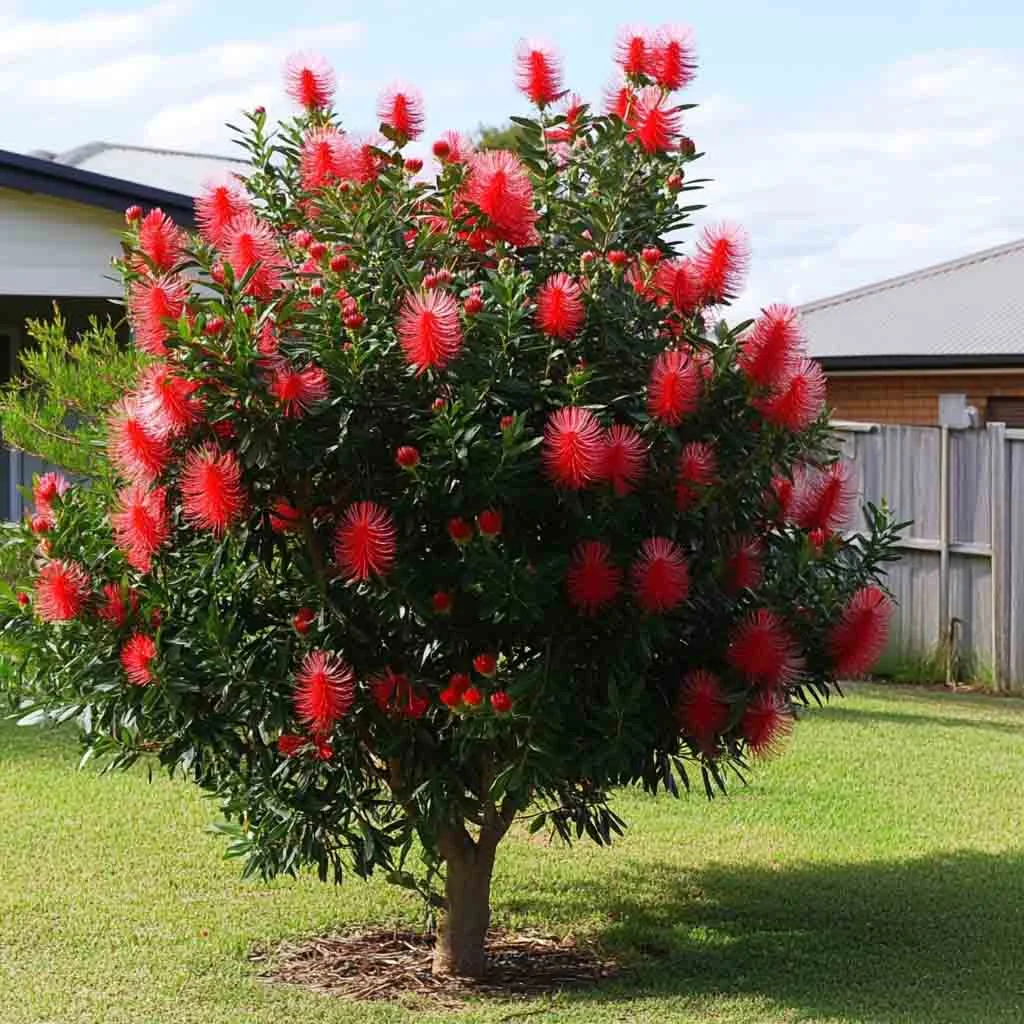
This one’s a stunner if you live in a warmer climate (zones 8–11). The blooms really do look like red bottlebrushes.
- Height: 10–15 feet
- Bloom Time: Spring and again in fall
- Color: Bright red, fuzzy blooms
Why It Pops:
- Blooms are unusual, vibrant, and loved by hummingbirds.
- Evergreen in warm zones.
- Handles heat and poor soil like a champ.
🌺 Design Tip: Looks amazing near driveways or modern-style homes.
18. Desert Willow (Chilopsis linearis)
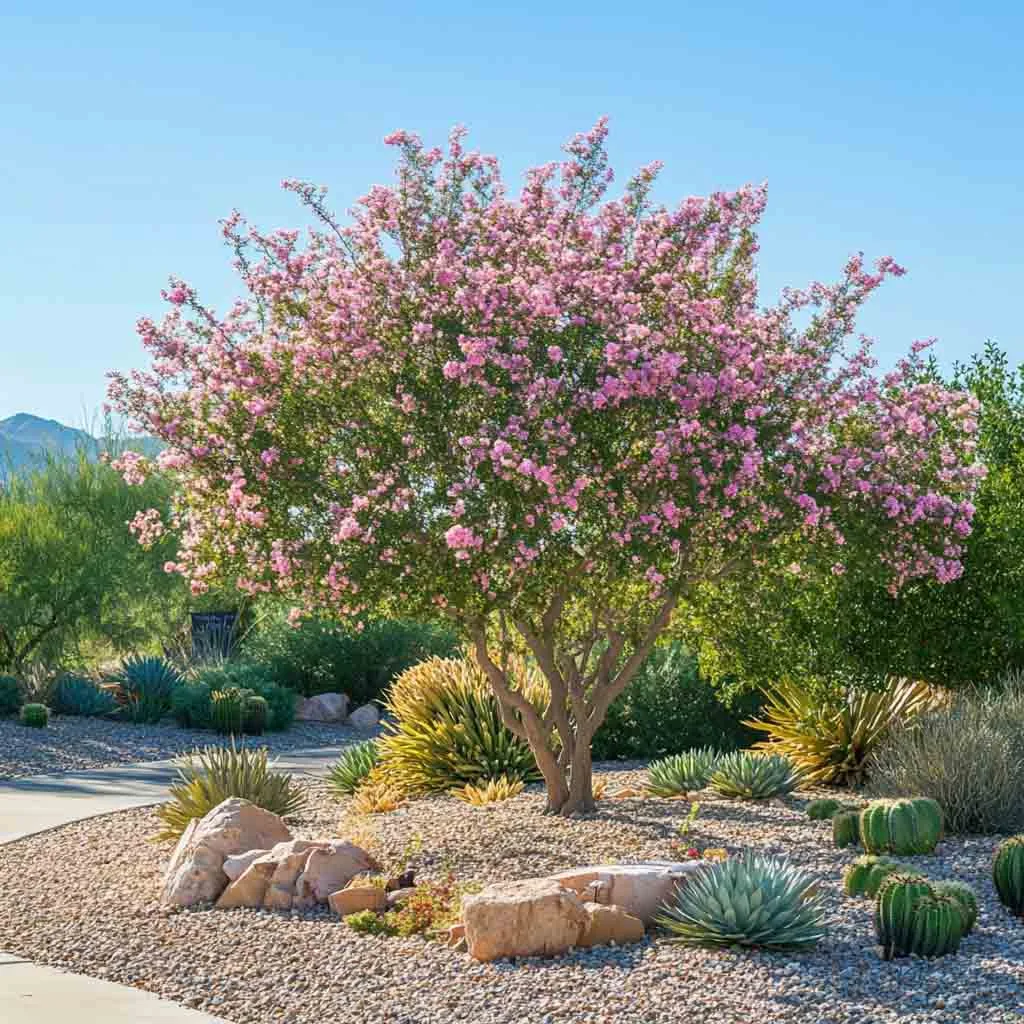
Perfect if you’re in a hot, dry area and want color without constant watering.
- Height: 15–25 feet
- Bloom Time: Late spring through fall
- Color: Pink, lavender, or burgundy
Why It’s Awesome:
- Drought-tolerant and thrives in desert-like conditions.
- Orchid-like blooms add a tropical flair.
- The willowy shape gives a breezy, relaxed vibe.
🌸 Design Tip: Combine with gravel or cactus gardens for a no-fuss landscape.
19. Silk Tree (Albizia julibrissin)
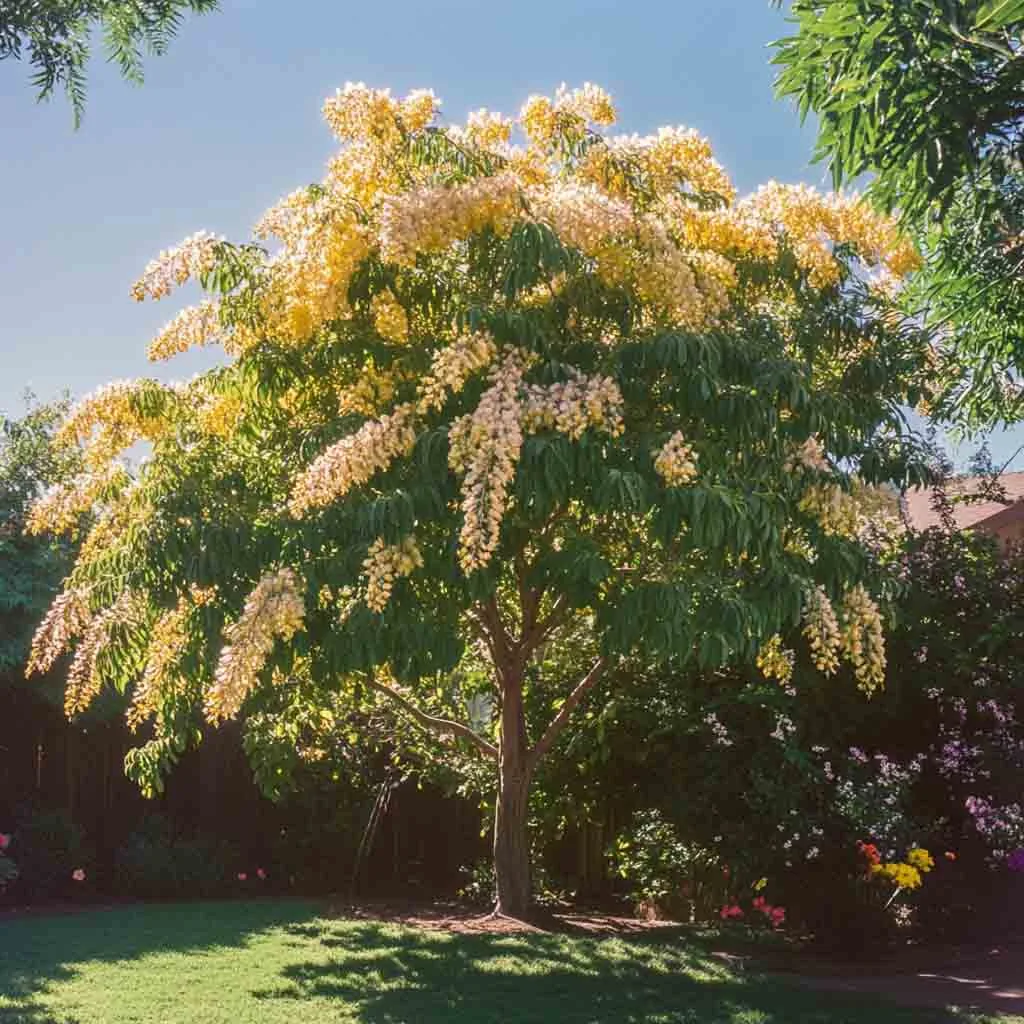
Also known as Mimosa tree, this one gives you tropical vibes in a manageable size.
- Height: 15–25 feet
- Bloom Time: Summer
- Color: Fluffy pink flowers
Standout Features:
- The fern-like foliage is super delicate.
- Flowers are soft and puffball-like.
- Loved by butterflies and bees.
🌿 Design Tip: Use it to add shade over patios or sunny paths.
20. Coral Tree (Erythrina crista-galli)
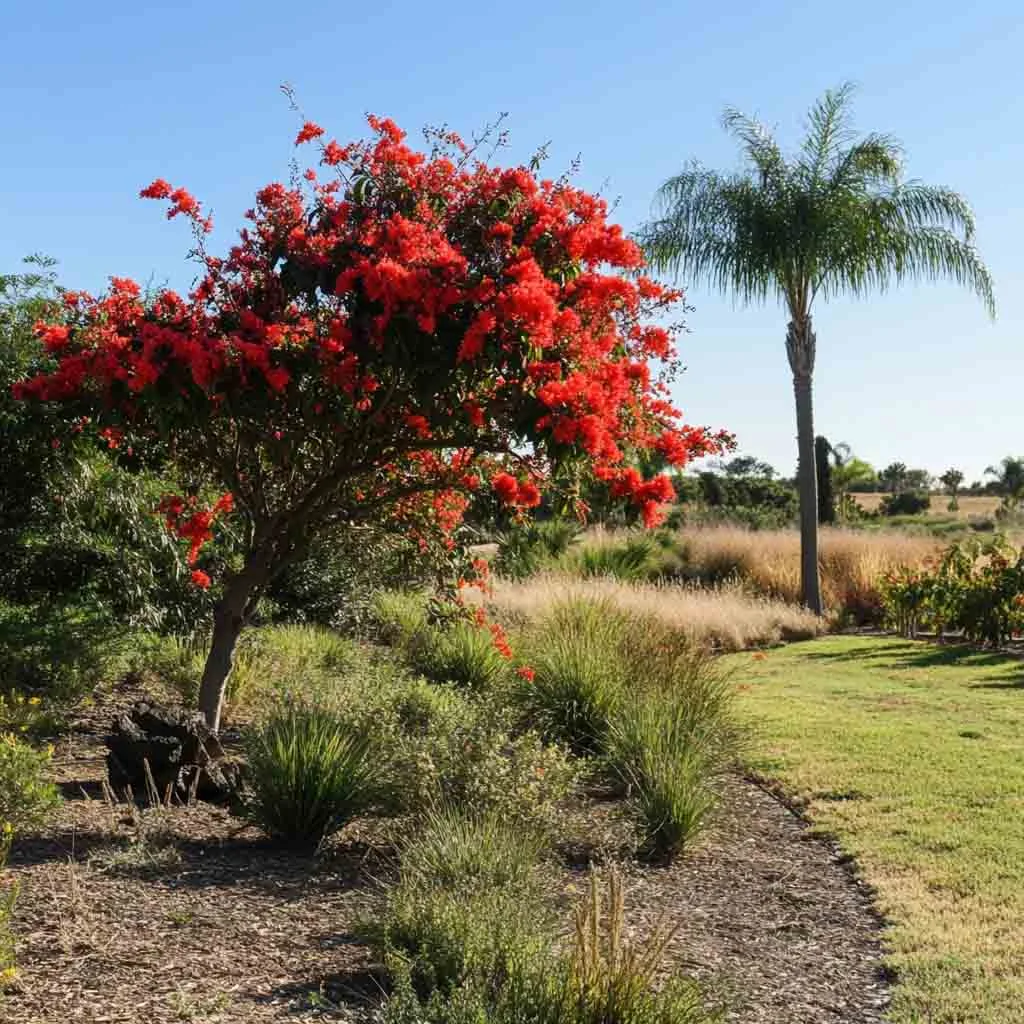
If you live in a warm zone, this tree brings bold color like no other.
- Height: 15–20 feet
- Bloom Time: Spring to summer
- Color: Bright red or coral
Why Gardeners Choose It:
- Big, showy flower clusters.
- Heat and drought tolerant, once established.
- Makes a great conversation starter.
🔥 Design Tip: Plant it where it can stand alone and be the star.
21. Seven-Son Flower (Heptacodium miconioides)
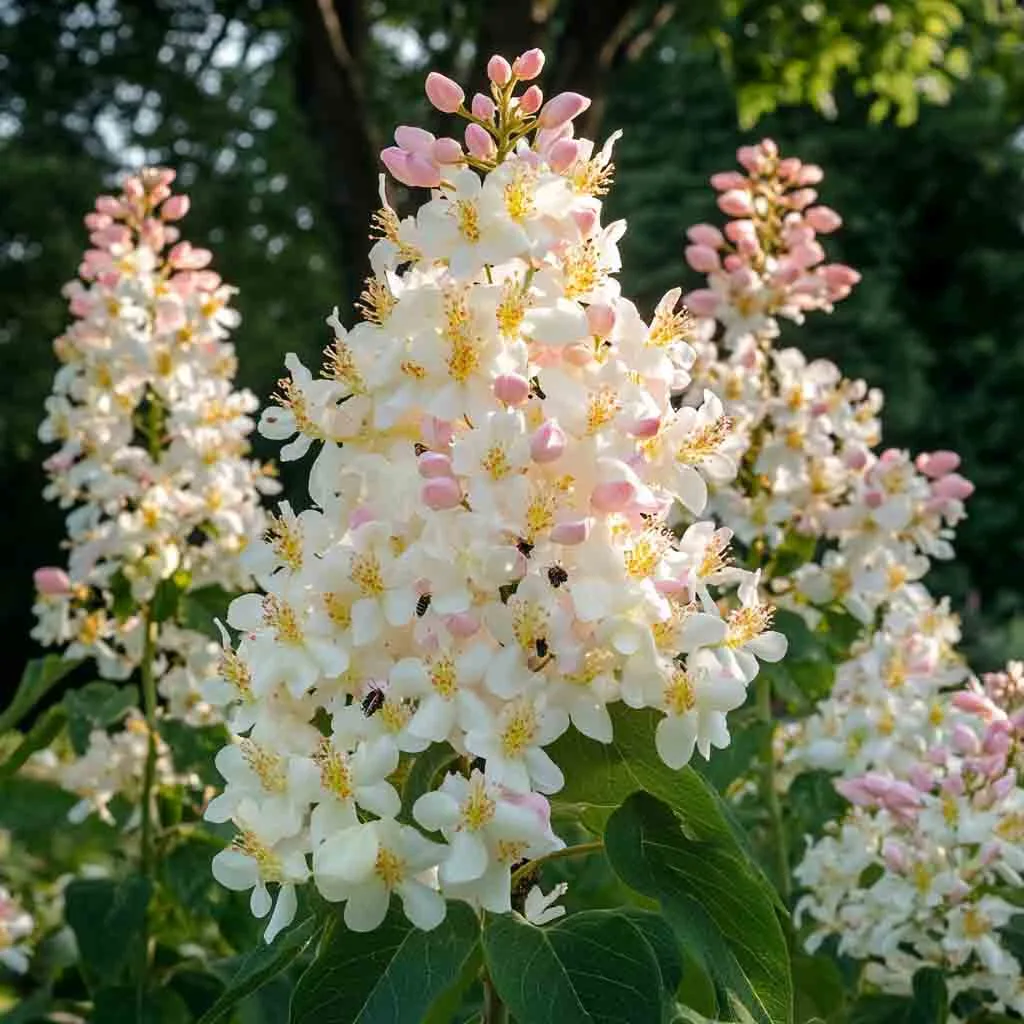
You don’t see this one often, but wow, is it worth discovering.
- Height: 15–20 feet
- Bloom Time: Late summer to fall
- Color: Creamy white, followed by bright pink calyxes
What Makes It Unique:
- Keeps blooming when other trees are done.
- Peeling bark and layered branches add winter interest.
- Attracts butterflies and hummingbirds.
🌸 Design Tip: Perfect near seating areas or patios, especially if you want late-season color.
22. Carolina Silverbell (Halesia carolina)
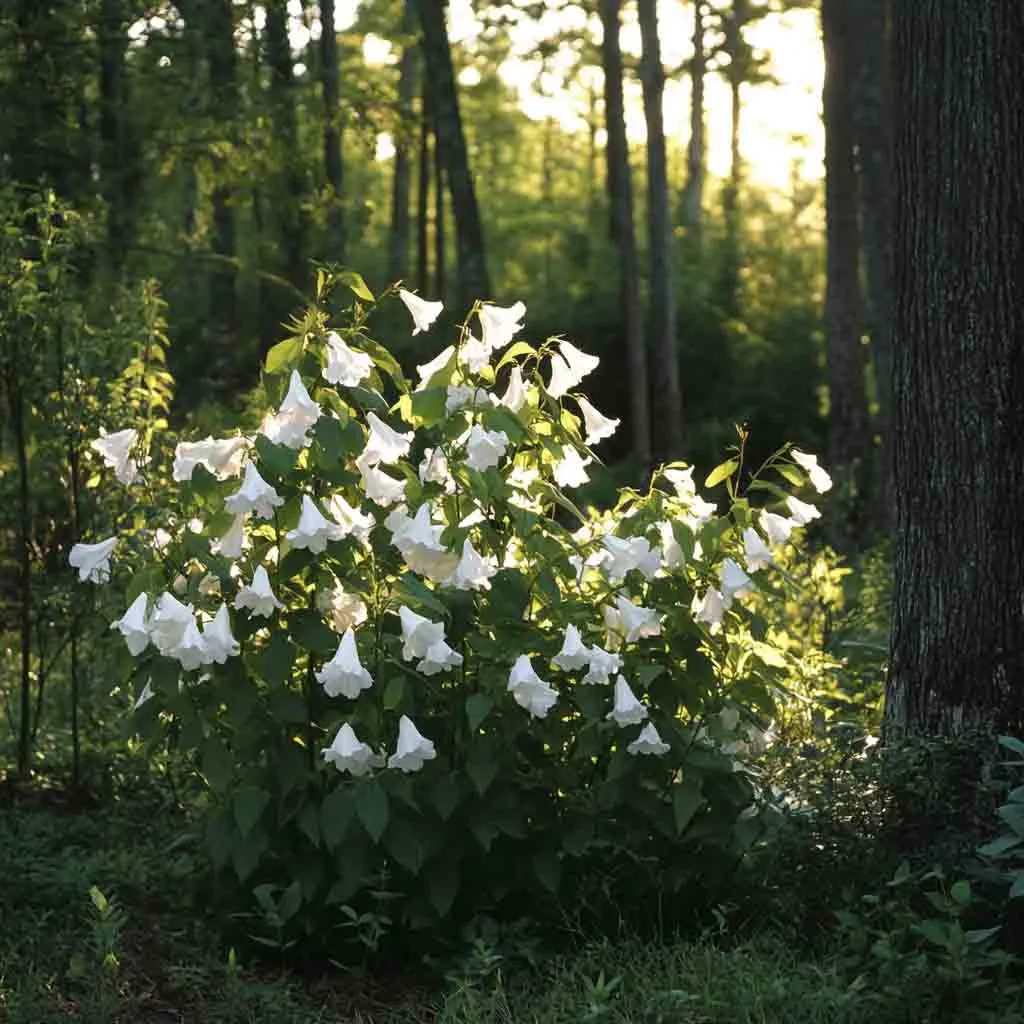
This one’s for all you cottage garden lovers. It feels gentle, romantic, and just a bit whimsical.
- Height: 15–20 feet
- Bloom Time: Mid to late spring
- Color: Bell-shaped white or pale pink flowers
Why It Charms:
- Graceful, pendant blooms that look like little bells.
- Tolerates shade better than most flowering trees.
- Pairs beautifully with ferns and woodland plants.
🌳 Design Tip: Great for adding a soft, layered feel under larger canopy trees.
FAQs About Small Flowering Trees
What’s the best small flowering tree for full sun?
Crape myrtle is hands-down one of the best. It loves hot, sunny spots and rewards you with months of color.
Can I grow flowering trees in containers?
Absolutely! Try dwarf lilac or Japanese maple in large containers. Just make sure the pot has excellent drainage and you water regularly.
Do flowering trees attract bees?
Yes, most of them do—which is a good thing! If you’re nervous, go with trees like fringetree, which attract pollinators but aren’t typically swarmed by bees.
Are these trees safe for pets?
Most are, but check specific species. For example, serviceberry is safe, while some magnolias might cause mild issues if ingested in large amounts.
When’s the best time to plant them?
Early spring or fall is your best bet. The soil’s cool, and roots get a head start before the heat kicks in.
Wrapping It Up: Small Trees, Big Charm
Adding a small flowering tree to your yard isn’t just about beauty, it’s about making your outdoor space feel inviting, personal, and alive.
I’ve seen tiny trees transform boring corners into showstopping spaces. If you’ve got a little patch of land (or even a big container!), you’ve got room to grow something magical.
Let me know which one you’re planting first, I’d love to hear how your yard transforms!

